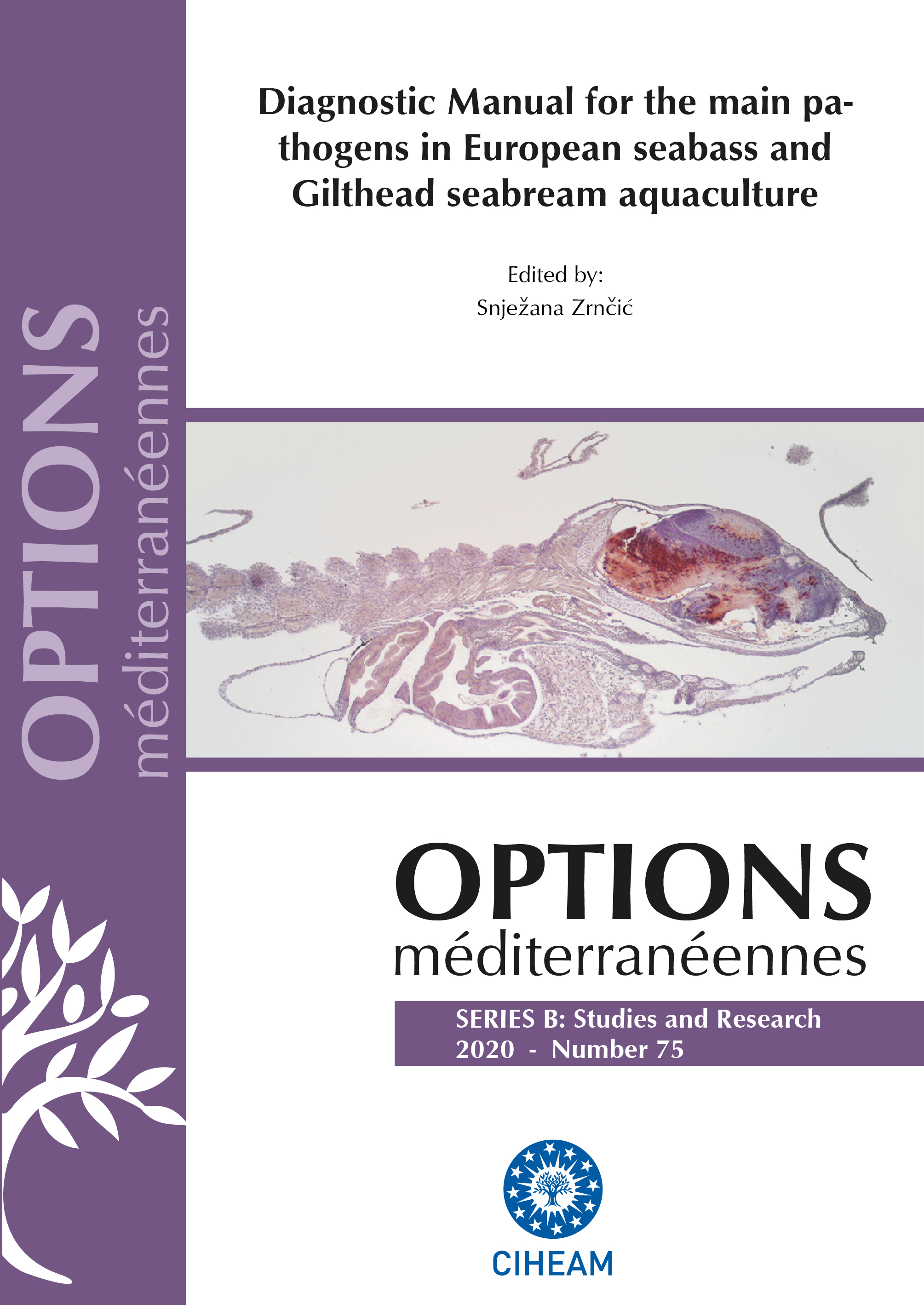| Article précédent | p. 156-157 | Article suivant |
Summary sheet for Tenacibaculum infections
Tenacibaculum infections Aetiological agent/s Infections induced by a group of species belonging to the genus Tenacibaculum including T. maritimum, T. discolor, T. dicentrarchi, T. soleae, T. gallaïcum. Co-infections often described. Epidemiology Host/s (species; age): Most Mediterranean aquaculture species including seabass (Dicentrarchux labrax), seabream (Sparus aurata), Solea (Solea senegalensis), Mugilidae. Affect all stages of development with a higher incidence on juvenile stages from weaning to 100gr average. Morbidity and mortality rates: depend on age, size class, rearing system and the Tenacibaculum species involved. Acute form on fish from 0.5g to 100g: over 50% at weaning and early stages, up to 30% for fry in land based systems, 10 to 20% in pregrowing sea cage units. Sub-acute form with low mortality rate on larger stages. Transmission: horizontal transmission from fish to fish or from the environment, especially the biofilm. Factors (environmental, others) for disease outbreak: Temperature dependent from 14°C to 19°C, higher salinity (>32ppt), low pH in RAS system, water quality parameters (organic load, low redox). Predisposing zootechnical factors: mechanical lesions, skin parasitic infection, feeding behaviour/aggressivity, mucus erosion. Co infection with bacterial skin infections: filamentous segmented bacteria, skin vibriosis.
- [ Afficher ]
- [ Télécharger ]
- [ Exporter la citation ]
Vous pouvez télécharger la citation au format :
- [ Imprimer ]
-
Mots-clés
AQUACULTURE, DIAGNOSTIC, EPIDEMIOLOGIE, MALADIE DES POISSONSCiter cet article
Le Breton A. Summary sheet for Tenacibaculum infections. In : Zrncic S. (ed.). Diagnostic Manual for the main pathogens in European seabass and Gilthead seabream aquaculture. Zaragoza : CIHEAM, 2020. p. 156-157. (Options Méditerranéennes : Série B. Etudes et Recherches; n. 75). http://om.ciheam.org/om/pdf/b75/00007954.pdf



